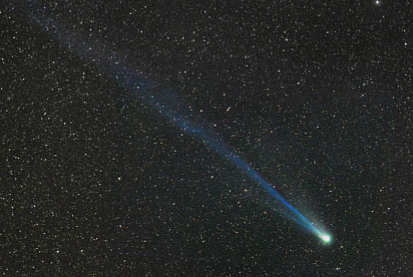
UAE: Perseids Meteor Shower To Peak On August 12 How To Watch, Photography Tips
UAE residents are in for a treat as the Perseids meteor shower is set to light up the sky with one of the most popular celestial displays of the year.
While other showers promise meteors, the Perseids also produces occasional fireballs, which are exceptionally bright meteors, brighter than Venus, and sometimes accompanied by sound.
Recommended For YouWhile Perseids has been around since mid-July and will remain so till late August, it peaks on August 12 to 13. This year, a bright moon will play backdrop to the shower, which means fainter meteors may not be visible; but fear not, the fireballs will continue to stay prominent.
When, where to view it?According to the Dubai Astronomy Group, the best viewing times are after midnight until dawn, from any dark location away from city lights.
Stargazers do not need telescopes or binoculars; the meteors are visible to the naked eye. It is important to be patient, and allow your eyes around 20 to 30 minutes to adapt to the darkness.
On August 12, DAG will also host a special Perseids Meteor Shower Viewing Event at Jebel Jais from 11pm to 3am.
With guided stargazing, telescope observations, storytelling and commentary, UAE residents can look at the sky from one of the country's highest and coolest locations, offering pristine dark skies.
What is the Perseids Meteor Shower?The Perseids occur when Earth passes through a trail of debris left behind by Comet Swift–Tuttle.
These dust and ice particles enter the atmosphere at speeds of 59km/s, burning up as they do so. This causes the bright streaks of light we see; the shower is named after the constellation Perseus, from which the meteors appear to radiate.
Comet Swift–Tuttle is roughly twice the size of the object that caused the extinction of the dinosaurs. It orbits the Sun once every 133 years and last passed close to Earth in 1992. This also means it will return in 2126, giving future generations an even more spectacular display.
However, astronomers have calculated that Comet Swift–Tuttle poses no threat to Earth for at least the next few thousand years.
How to photograph the PerseidsFor photography enthusiasts, DAG offers some tips to photograph these fast-moving objects
- Use a DSLR or mirrorless camera for full manual control over settings such as ISO, aperture, and shutter speed.
A sturdy tripod is essential for sharp, stable shots, and a wide-angle lens will help you cover more of the sky Use a remote shutter release or intervalometer, and bring spare batteries. A lens heater can also help prevent condensation from forming.
Turn off autofocus and manually focus on a bright star, planet, or infinity for the sharpest results. Set your aperture to f/2.8 or lower, use a 15–30 second exposure, and adjust ISO to 1600 or higher.

Legal Disclaimer:
MENAFN provides the
information “as is” without warranty of any kind. We do not accept
any responsibility or liability for the accuracy, content, images,
videos, licenses, completeness, legality, or reliability of the information
contained in this article. If you have any complaints or copyright
issues related to this article, kindly contact the provider above.


















Comments
No comment